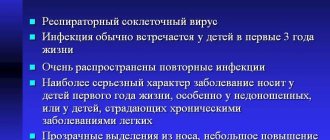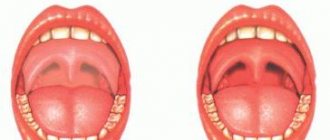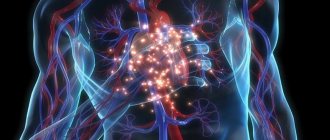Story
People have been suffering from silicosis since ancient times. This is evidenced by silicotic changes in the lungs discovered during the study of Egyptian mummies, which may have been the cause of death. For a long time, Silicosis was identified with tuberculosis, calling it the consumption of stonemasons or miners, and only by the end of the 19th century. the idea of S. is formed as an independent lung disease caused by inhalation of dust. The term "silicosis" was proposed in 1870 by Visconti.
S. became most widespread at the end of the 19th and 20th centuries. Ch. arr. in connection with the development of the mining and engineering industries. According to researchers from a number of countries, the incidence of S. in the mentioned industries continued to remain high until the 60s of the current century. Thus, in England in 1955, the number of patients who received a pension due to S.’s disease was approx. 40 thousand. Approximately the same number of patients were registered in the USA and Germany in the same years. And only in recent decades has the incidence of S. in highly developed countries decreased. In the Soviet Union, due to the implementation of systematic preventive measures, the incidence rate of S. has constantly decreased; in recent years, new cases of the disease have not been identified in many enterprises.
Notes
- See [ru.wikibooks.org/wiki/%D0%9B%D1%83%D1%87%D1%88%D0%B8%D0%B5_%D1%81%D0%BF%D0%BE%D1% 81%D0%BE%D0%B1%D1%8B_%D1%81%D0%BD%D0%B8%D0%B6%D0%B5%D0%BD%D0%B8%D1%8F_%D0%B7% D0%B0%D0%BF%D1%8B%D0%BB%D1%91%D0%BD%D0%BD%D0%BE%D1%81%D1%82%D0%B8_%D0%B2_%D1% 83%D0%B3%D0%BE%D0%BB%D1%8C%D0%BD%D1%8B%D1%85_%D1%88%D0%B0%D1%85%D1%82%D0%B0% D1%85#.D0.A1.D0.B8.D0.BB.D0.B8.D0.BA.D0.BE.D0.B7 Anita L. Wolfe and Jay F. Colinet
.
Silicosis] in [ru.wikibooks.org/wiki/%D0%9B%D1%83%D1%87%D1%88%D0%B8%D0%B5_%D1%81%D0%BF%D0%BE%D1 %81%D0%BE%D0%B1%D1%8B_%D1%81%D0%BD%D0%B8%D0%B6%D0%B5%D0%BD%D0%B8%D1%8F_%D0%B7 %D0%B0%D0%BF%D1%8B%D0%BB%D1%91%D0%BD%D0%BD%D0%BE%D1%81%D1%82%D0%B8_%D0%B2_%D1 %83%D0%B3%D0%BE%D0%BB%D1%8C%D0%BD%D1%8B%D1%85_%D1%88%D0%B0%D1%85%D1%82%D0%B0 %D1%85 The best ways to reduce dust in coal mines. Best Practices for Dust Control in Coal Mining.
DHHS (NIOSH) Publication No. 2010–110] - (February 2006) “[www.oo2.ru/files/2006-1/___1_2006.pdf SILICOSIS OF THE PULMONARY: a disease of sandblasters?]” (pdf). “Cleaning up. Coloring" No. 1
: 14-15. Retrieved 2009-19-01. - ↑ 12
[ru.wikisource.org/wiki/%D0%9E%D1%82%D1%87%D1%91%D1%82_%D1%81%D0%BF%D0%B5%D1%86%D0%B8% D0%B0%D0%BB%D0%B8%D1%81%D1%82%D0%BE%D0%B2_NIOSH_%D0%BE_%D1%80%D0%B0%D0%B7%D1%80%D0% B0%D0%B1%D0%BE%D1%82%D0%BA%D0%B5_%D0%B2%D0%BE%D0%B7%D0%B4%D1%83%D1%88%D0%BD% D0%BE%D0%B3%D0%BE_%D0%B4%D1%83%D1%88%D0%B0_%D0%B4%D0%BB%D1%8F_%D0%B7%D0%B0%D1% 89%D0%B8%D1%82%D1%8B_%D1%88%D0%B0%D1%85%D1%82%D1%91%D1%80%D0%BE%D0%B2_%D0%BE% D1%82_%D0%BF%D1%8B%D0%BB%D0%B8 NIOSH Report on the Development and Testing of an Air Shower for Dust Protection for Miners] - (July 2008) “[www.oo2.ru/node/168 Material quality].” “Cleaning up. Coloring" No. 5
: 24. Retrieved 2009-19-01. - Jay F. Colinet, James P. Rider, Jeffrey M. Listak, John A. Organiscak, and Anita L. Wolfe.
[www.cdc.gov/niosh/mining/UserFiles/works/pdfs/2010-110.pdf Best Practices for Dust Control in Coal Mining]. — National Institute for Occupational Safety and Health. — Pittsburgh, PA; Spokane, WA: DHHS (NIOSH) Publication No. 2010-110, 2010. - 84 p. There is a translation: The best ways to reduce dust in coal mines. NIOSH 2010 [ru.wikibooks.org/wiki/%D0%9B%D1%83%D1%87%D1%88%D0%B8%D0%B5_%D1%81%D0%BF%D0%BE%D1% 81%D0%BE%D0%B1%D1%8B_%D1%81%D0%BD%D0%B8%D0%B6%D0%B5%D0%BD%D0%B8%D1%8F_%D0%B7% D0%B0%D0%BF%D1%8B%D0%BB%D1%91%D0%BD%D0%BD%D0%BE%D1%81%D1%82%D0%B8_%D0%B2_%D1% 83%D0%B3%D0%BE%D0%BB%D1%8C%D0%BD%D1%8B%D1%85_%D1%88%D0%B0%D1%85%D1%82%D0%B0% D1%85 Wiki] - Andrew B. Cecala, Andrew D. O'Brien, Joseph Schall, Jay F. Colinet et al.
[www.cdc.gov/niosh/mining/works/coversheet1765.html Dust Control Handbook for Industrial Minerals Mining and Processing]. — National Institute for Occupational Safety and Health. — Pittsburgh, PA; Spokane, WA: DHHS (NIOSH) Publication No. 2012-110, 2012. - 84 p. There is a translation: Guide to dust protection during mining and processing of minerals 2012 PDF [ru.wikibooks.org/wiki/%D0%A0%D1%83%D0%BA%D0%BE%D0%B2%D0%BE% D0%B4%D1%81%D1%82%D0%B2%D0%BE_%D0%BF%D0%BE_%D0%B7%D0%B0%D1%89%D0%B8%D1%82%D0% B5_%D0%BE%D1%82_%D0%BF%D1%8B%D0%BB%D0%B8 Wiki] - Coal Mine Dust Exposures and Associated Health Outcomes. A Review of Information Published Since 1995 [ru.wikisource.org/wiki/%D0%97%D0%B0%D1%89%D0%B8%D1%82%D0%B0_%D1%88%D0%B0%D1 %85%D1%82%D1%91%D1%80%D0%BE%D0%B2_%D0%A1%D0%A8%D0%90_%D0%BE%D1%82_%D1%83%D0%B3 %D0%BE%D0%BB%D1%8C%D0%BD%D0%BE%D0%B9_%D0%BF%D1%8B%D0%BB%D0%B8 Translation]
- Jon C. Volkwein, Robert P. Vinson, Steven J. Page, Linda J. McWilliams, Gerald J. Joy, Steven E. Mischler and Donald P. Tuchman.
[www.cdc.gov/NIOSH/Mining/works/coversheet349.html Laboratory and Field Performance of a Continuously Measuring Personal Respiratory Dust Monitor]. - Pittsburgh, PA: National Institute for Occupational Safety and Health, 2006. - 55 p. — (DHHS (NIOSH) Publication No. 2006-145). There is a translation: PDF Wiki - NIOSH Dust Control Guidelines (2012)
- Ivanova I.S.
Silicosis (Russian) //
Research Institute of Occupational Medicine of the Russian Academy of Medical Sciences and the State Committee for Sanitary and Epidemiological Surveillance of Russia
Occupational medicine and industrial ecology. - 1994. - No. 10. - P. 19-23. — ISSN [www.sigla.ru/table.jsp?f=8&t=3&v0=0016-9919&f=1003&t=1&v1=&f=4&t=2&v2=&f=21&t=3&v3=&f=1016&t=3&v4=&f=1016&t=3&v5 =&bf=4&b=&d=0&ys=&ye=&lng=&ft=&mt=&dt=&vol=&pt=&iss=&ps=&pe=&tr=&tro=&cc=UNION&i=1&v=tagged&s=0&ss=0&st=0&i18n=ru&rlf=&psz =20&bs=20&ce=hJfuypee8JzzufeGmImYYIpZKRJeeOeeWGJIZRrRRrdmtdeee88NJJJJpeeefTJ3peKJJ3UWWPtzzzzzzzzzzzzzzzzbzzvzzpy5zzjzzzzzzzzzzzzzzzzzzzzzzzzz zzzzztzzzzzzzbzzzzzzzzzzzzzzzzzzzzzzzzzzzzzzzzzyeyTjkDnyHzTuueKZePz9decyzzLzzzL*.c8.NzrGJJvufeeeeeJheeyzjeeeeJh*peeeeKJJJJJJJJJmjHvOJJJJJJJJfe eeieeeeSJJJJSJJJ3TeIJJJJ3..E.UEAcyhxD.eeeeeeuzzzLJJJJ5.e8JJJheeeeeeeeeeeeyeyeK3JJJJJJJJ*s7defeeeeeeeeeeeeeeeeeeeeeeeeSJJJJJJJZIJJzzz1..6LJJJJJJtJJZ4….EK*&deb ug=false 0016-9919]. - Artamonova V.G., Mukhin N.A.
Occupational diseases. - 4th ed. - Moscow: Medicine, 2009. - P. 56-73. — 480 s. — 3000 copies. — ISBN 5-225-04789-0.
Etiology
Silicosis develops when inhaling dust containing free silicon dioxide (SiO2), most often among workers in the mining industry (drillers, drifters, miners, fasteners, blasters, etc.), engineering (sandblasters, shot blasters, chippers, etc.), in the production of refractory materials , sand grinding, tunneling, granite processing. In nature, silicon dioxide (see) is more often found in three crystalline varieties - in the form of quartz, tridymite, cristobalite. As a rule, the disease occurs as a result of exposure to quartz dust and very rarely - condensation aerosols (see Aerosols) of silicon dioxide, which have a significantly less fibrogenic effect.
The incidence of Silicosis is directly dependent on the amount, dispersed composition of inhaled dust and the quartz content in it. Particles ranging in size from 0.5 to 5 microns have the most fibrogenic effect.
MPC of dust containing more than 70% crystalline silicon dioxide is 1 mg/m3, from 10 to 70% - 2 mg/m3, from 2 to 10% - 4 mg/m3; The maximum permissible concentration for dust containing more than 70% of amorphous silicon dioxide is 1 mg/m3, from 10 to 70% is 2 mg/m3. In previous years, the disease usually developed under unfavorable working conditions in the first 5-10 years of work.
Safety precautions
- The use of all kinds of technical means, for example, exhaust ventilation, process automation and remote control, air showers[4], etc. It is necessary to limit the use of compressed air for surface cleaning.
- The use of sand-replacing materials during abrasive blasting[8], for example, cooper slag.
- Use of respirators effective against silica. Measurements have shown that widely used half-mask respirators are ineffective in practice and do not provide reliable protection. The use of respirators is a last resort and can only complement the use of effective ventilation and other means of collective protection[9][10], and not replace it.
- Do not drink, eat or smoke if dust containing silica is nearby.
- You should always wash your hands and face before eating, drinking or smoking away from abrasive blasting operations.
Pathogenesis
The pathogenesis is still largely unclear. It has been established that S.'s development is impossible without phagocytosis (see) of quartz dust particles by macrophages (see), which die as a result of absorption of quartz crystals. Phagocytosis of dust particles is a necessary prerequisite for the occurrence of the disease. However, the reasons for the death of macrophages that absorb dust particles (coniophages) and the subsequent development of fibrosis remain unclear. According to modern It is believed that the cytotoxic effect of quartz particles on coniophage is based on complex biochemical, enzymatic and electron exchange mechanisms. Damage to the coniophage is associated with the appearance of hydroxyl groups on the surface of the quartz fracture, creating active centers of the crystal lattice. Changes in electronic structure and electronic potential, in turn, can lead to free radical activity (see Free radicals) and changes in the structural components of cell membranes. According to some data, a certain yet unknown fibrogenic factor may be released from dying macrophages, stimulating fibrogenesis and collagen formation. Along with this, there are facts indicating that immunopathological, including autoimmune, mechanisms also take part in S.’s pathogenesis. A certain role is assigned to individual predisposition, possibly related to the genetic characteristics of the body, including immune homeostasis.


